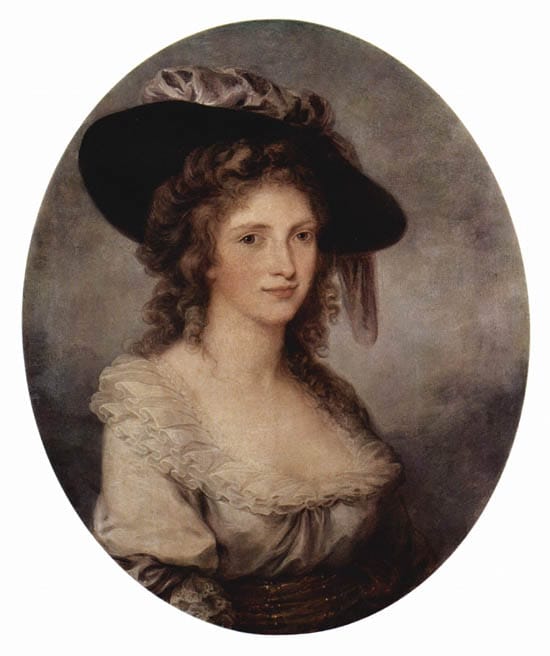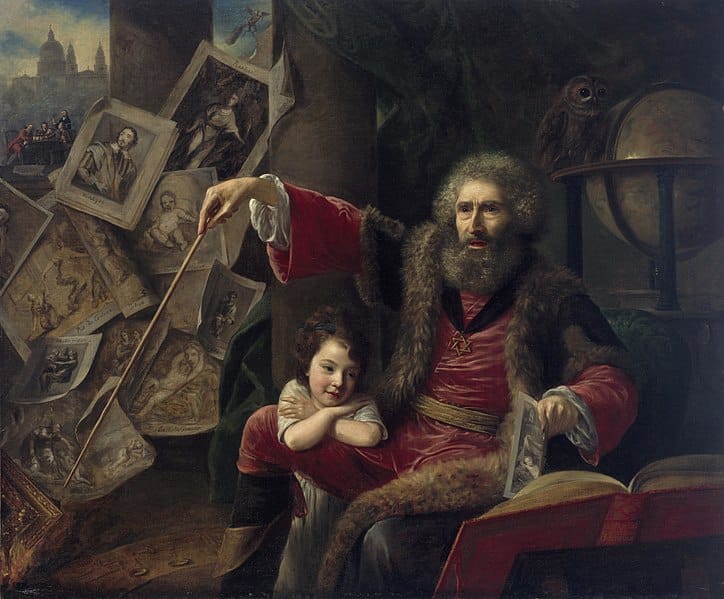'The Conjurer'

London’s celebrity art world was rocked by controversy in 1775. The glamorous Angelica Kauffman, whose self-portrait is shown above, had arrived in London a decade earlier, shortly after Casanova’s misadventures there. Like La Charpillon, she was born in Switzerland and already had a professional career as a painter in Italy before moving to London at the age of 25. There she was taken under the wing of the influential Sir Joshua Reynolds and the royal family.

In 1775, Nathaniel Hone took aim at Reynolds’ celebrity status in The Conjurer, with the above painting, in which Reynolds can be seen waving a wand to magically create new paintings out of the Old Renaissance Masters. Worse, Hone worked a nude portrait of Kauffman into the top left of the painting. At least Kauffman thought it was her and she protested to the Royal Academy (to which all three belonged). Hone would eventually paint her out, but the implications seem obvious: that Hone thought both Reynolds and Kauffman were whores. We do not know if there was ever an affair between Reynolds and Kauffman, although there has been plenty of speculation (Reynolds never married and hers was a failure). At any rate the Royal Academy refused the painting and Hone took his wares elsewhere. What is shown here is actually a sketch, not the final version (which doesn’t seem to be around any more) and it is now in London’s Tate Gallery.
Kauffman painted her self-portrait (the one up top) between 1780 and 1785, which is also when she remarried and retired to Rome. There, she painted this image of Venus "procuring" Helen for Paris and she painted Goethe, who sings her praises in Italian Journey (1786-1787). Both were interested in the erotic antics of classical Greece.
